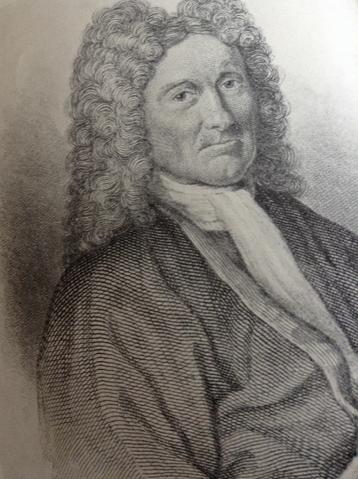
Identity area
Type of entity
Authorized form of name
Parallel form(s) of name
- Sir Robert Sibbald
Standardized form(s) of name according to other rules
Other form(s) of name
Identifiers for corporate bodies
Description area
Dates of existence
History
Born Edinburgh 1641; died Edinburgh 1722
Robert Sibbald was educated in Cupar, at Edinburgh High School, and at the university there when he was awarded an MA in 1659. From 1660 to 1661 he studied anatomy and surgery and botany and chemistry at Leiden before moving to Paris and then Angers where he graduated MD in 1661. Returning to Edinburgh to practise as a doctor he was appalled at the state of medicine in the city and initially established a private garden to cultivate medicinal herbs. In 1670, with his friend and distant cousin Andrew Balfour, he leased a small plot belonging to Holyroodhouse at St. Anne’s Yards to assemble a collection of between 800 and 900 plants. This, together with a second (physic) garden at the Trinity Hospital acquired 6 years later, became a major site for plants of use in material medica and a teaching resource for medical students. Sibbald was a joint founder of a medical virtuoso club which in 1681 became the Royal College of Physicians of Edinburgh. He was knighted in 1682, appointed physician in ordinary to Charles II and made geographer royal for Scotland. In 1684 he produced a ‘Pharmacopeia Edinburgensis’ and the following year he became the first professor of medicine at Edinburgh University. However hostility to his conversion to Catholicism (which he later renounced) meant he had to flee temporarily to London. On his return to Edinburgh he developed a deepening interest in natural history, geography and antiquarianism and from 1682 became involved in compiling information from a range of sources on the geography and natural history of Scotland, resulting in the publication of ‘Scotia Illustrata’ in 1684, with a second edition in 1696. Drawing on his various interests, Sibbald contributed to early Enlightenment discourses on the economic potential of the nation. As a physician he explored the efficacy of botanical cures by extracted from Scottish plant life and his botanical work was admired by Linnaeus who named the genus Sibbaldia in his honour.
Sources: Dictionary of National Biography; HR Fletcher and WH Brown ‘The Royal Botanic Garden Edinburgh 1670-1970’; Deni Bown, ‘4 Gardens in One’; (R. Desmond ‘Dictionary of British and Irish Botanists and Horticulturalists).
D.W.
Places
Legal status
Functions, occupations and activities
Physician and geographer
Mandates/sources of authority
Internal structures/genealogy
General context
Relationships area
Access points area
Subject access points
Place access points
Occupations
Control area
Authority record identifier
Maintained by
Institution identifier
Rules and/or conventions used
Status
Level of detail
Dates of creation, revision and deletion
Revised 16/03/2023 by Leonie Paterson